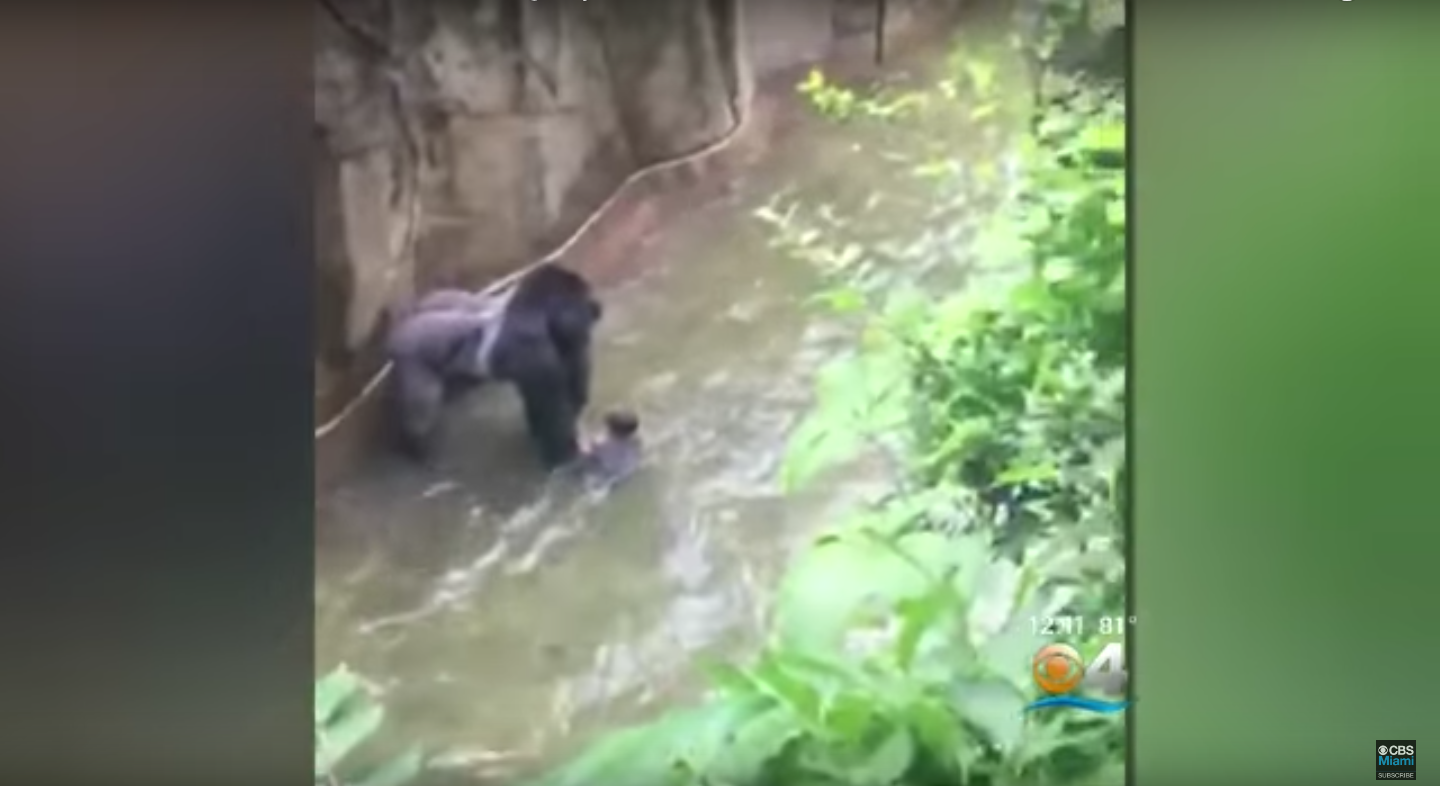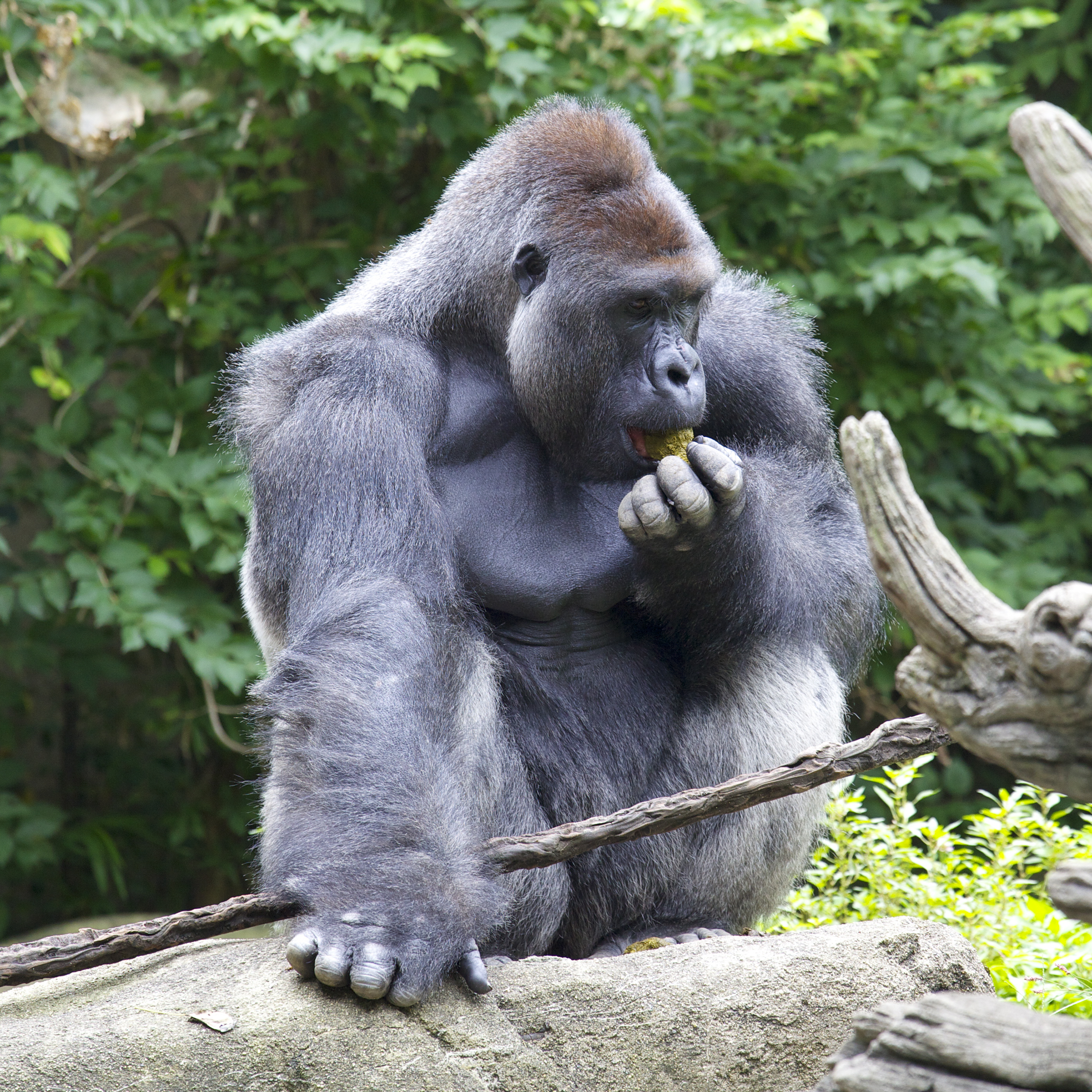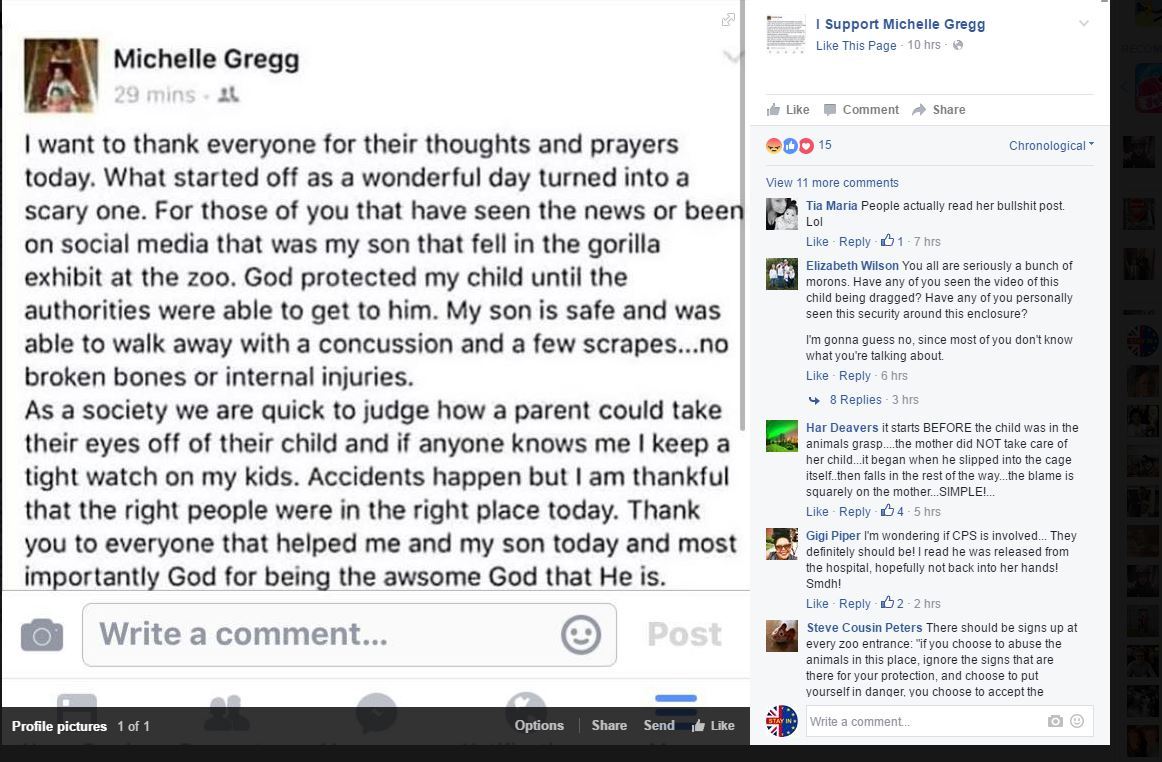Who's at Fault for Killing the Gorilla at the Cincinnati Zoo?

By:
The Cincinnati Zoo is facing backlash over the decision to fatally shoot Harambe, a rare 17-year-old gorilla, after a 4-year-old boy tumbled into its enclosure on Saturday. The zoo's director said killing the animal was the only option it had to ensure the child's safety.
 CBS Miami - youtube.com
CBS Miami - youtube.com
"That child's life was in danger. People who question that don't understand you can't take a risk with a silverback gorilla — this is a dangerous animal," said Cincinnati Zoo Director Thane Maynard. "Looking back, we'd make the same decision. The child is safe."
For the child to slip into the gorilla enclosure wasn't an easy feat; he had to crawl under a rail and through wires, and go over a moat, according to the zoo. People are pointing fingers at the child's parents for failing to notice their 4-year-old breaching these barriers.
Some are also wondering why the zoo didn't shoot the primate with a tranquilizer gun instead of with a firearm. The zoo said that doing so would have been risky because the tranquilizer may not have taken effect for a few minutes, or worse, the shot could have agitated the gorilla, causing him to react violently.
Still, experts doubt that killing the gorilla was necessary.
"When gorilla or other apes have things they shouldn't have, keepers will negotiate with them, bring food, their favorite treats, pineapple or some kind of fruit that they don't know and negotiate with them," Ian Redmond, chairman of The Gorilla Organization, told CNN.
"I don't know if that was tried or people thought there was too much danger but it does seem very unfortunate that a lethal shot was required," Redmond added.
The child is now safe and sustained only non-life-threatening injuries. Authorities, responding to pubic outcry, have agreed to investigate the case further to determine if the parents or zoo acted criminally, reports The Washington Post.
But people are still looking to blame someone. Here's who could be at fault:
1. The Cincinnati Zoo
 m01229/Flickr - flickr.com
m01229/Flickr - flickr.com
Many people are arguing that the Cincinnati Zoo was too quick to shoot Harambe, especially since Western lowland gorillas are very much endangered. According to the zoo, there exist fewer than 175,000 of these species in the wild, and an additional 765 in zoos worldwide.
The enclosure is under question, too. Maynard asserts the zoo has passed all inspections, likening the accident with the 4-year-old to a locked car; if burglars try hard enough to get inside, they would likely succeed, he argues. This breach is the first of its kind since the exhibit opened 38 years ago.
 Dawn Huczek/Flickr - flickr.com
Dawn Huczek/Flickr - flickr.com
"The barriers are safe. They exceed any required protocols. The trouble with barriers, whatever the barrier is, some people get past it," he said. "The zoo is not negligent."
Similar incidents have occurred in the past, but none ended as this one did. For instance, in 1986, a 5-year-old fell into a gorilla pit at Jersey Zoo in the U.K. The primate approached the bleeding boy, and appeared to check on him and stroke his back. But after the boy woke up crying, the startled gorilla took off in a different direction, allowing zookeepers to move in and rescue him.
2. The parents
A Change.org petition entitled "Justice for Harambe" began circulating shortly after the incident aiming to hold the child's parents responsible for the death of the rare gorilla. Already it has collected upward of 350,000 signatures.
"This beautiful gorilla lost his life because the boy's parents did not keep a closer watch on the child," the petition reads.
The woman who filmed the scary incident had overheard the child saying to his parents that he wanted to go into the enclosure, leading some to believe the parents weren't paying proper attention.
The creators of the petition are doubtful the negligence displayed by the parents stopped at the zoo; they write that it may be reflective of his home life. They are requesting that Child Protective Services and the Cincinnati Police Department intervene.
Michelle Gregg, the child's mother, responded to the outpouring of criticism by posting this status update to Facebook and later deleting it:
 Michelle Gregg/Facebook - wordpress.com
Michelle Gregg/Facebook - wordpress.com
Maynard agrees with Gregg that "accidents happen." He said that he doesn't blame the child's parents for what transpired.
"We had a very difficult situation and we made a difficult call at the end. I'm not here to point fingers about fault," he said. "We live in the real world, we make real decisions. People and kids can climb over barriers. We work hard to make sure this zoo is safe. People can climb over barriers, that's what happened."
3. The crowd
In the video, the gorilla initially appears to be comforting the child by holding his hand and pulling up his pants. Things only seem to take a turn for the worse after the crowd grows louder and louder. Some believe the gorilla dragged the child through the water only after becoming frazzled by the noise.
Most everyone has been taught to remain calm in situations involving wild animals, yet the crowd failed to act in such a manner. Although it wasn't their fault that the child fell into the enclosure, they very likely could have escalated the incident. Zookeepers could have probably been able to intervene without the child or gorilla being harmed if the animal hadn't been agitated.
4. The fact that zoos exist
The animal-rights organization People for the Ethical Treatment of Animals suggests that the root of the problem is the existence of zoos. Like most wild animals, gorillas are unpredictable, and it's not usually safe for people to be around them. Even in instances where animals are bred in captivity, they retain their natural instincts, which sometimes are violent. Captive animals also tend to suffer physically and mentally due to their lack of freedom.
PETA encourages people who care about animals to steer clear of zoos and instead support organizations such as the International Primate Protection League or the Born Free Foundation — groups that work to preserve habitats.
